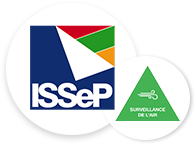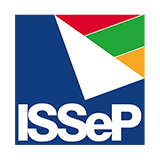The Belgian air quality index, the BelAQi
An air quality index provides an easy way of assessing short-term air quality over a given geographical area, based on measurements of several ambient air pollutants.
The BelAQi index (Belgian Airquality Index) is based on the concept developed within the framework of the European JOAQUIN project, which is used in the Netherlands (www.luchtmeetnet.nl). This is an index based on the effects of air pollution on health. It results from a combination of sub-indices relating to the concentrations of 4 pollutants in the ambient air: PM10 (fine particles whose (aerodynamic) diameter is less than 10 microns), PM2.5 (less than 2.5 microns) , ozone (O3), and nitrogen dioxide (NO2).
This index aims to translate the results of air quality measurements into a single, understandable qualitative assessment. It has been in use in Belgium (and therefore within the three regions) since 1 August 2017.
Since November 2022, the BelAQI index has been reviewed to take account of the new, more strict WHO guidelines published in September 2021 (for more information, see specific article IRCELINE-BelAQI on irceline.be). A new index calculated on an hourly basis has also been defined to provide more precise information on the actual air quality at a given time.
Two calculation methods are used:
- the daily index: the index for previous days is calculated on the basis of average daily concentrations ( PM10 and PM2.5 and NO2) and maximum daily average concentrations over 8 hours (O3 ).
- the current hourly index: is based on hourly average concentrations while incorporating the relationship between daily average concentrations and maximum daily hourly average concentrations.
In both cases, the BelAQI is expressed on a graduated scale from 1 to 10; the higher the index value, the worse the air quality. The highest sub-index value is assigned to the BelAQI.
|
Indice |
Classification |
PM10 - Daily average |
PM2.5 - Daily average |
O3 - Max 8 h/d |
NO2 - Daily average |
| 1 | Excellent | 0 - 5 | 0 - 2.5 | 0 - 30 | 0 - 5 |
| 2 | Very good | 6 - 15 | 2.6 - 5.0 | 31 - 60 | 6 - 10 |
| 3 | Good | 16 - 25 | 5.1 - 7.5 | 61 - 70 | 11 - 15 |
| 4 | Fairly good | 26 - 35 | 7.6 - 10 | 71 - 80 | 16 - 20 |
| 5 | Moderate | 36 - 45 | 11 - 15 | 81 - 100 | 21 - 25 |
| 6 | Poor | 46 - 60 | 16 - 25 | 101 - 130 | 26 - 30 |
| 7 | Very poor | 61 - 70 | 26 - 35 | 131 - 160 | 31 - 35 |
| 8 | Bad | 71 - 80 | 36 - 40 | 161 - 190 | 36 - 40 |
| 9 | Very bad | 81 - 100 | 41 - 50 | 191 - 220 | 41 - 50 |
| 10 | Horrible | > 100 | > 50 | > 220 | > 50 |
Table 1 : scale of the daiy BelAQI index, new ranges based on WHO 2021 guidelines.
|
Indice |
Classification |
PM10 - Moyenne horaire |
PM2.5 - Moyenne horaire |
O3 - Moyenne horaire |
NO2 - Moyenne horaire |
| 1 | Excellent | 0 - 10 | 0 - 3.5 | 0 - 30 | 0 - 10 |
| 2 | Very good | 11 - 20 | 3.6 - 7.5 | 31 - 65 | 11 - 15 |
| 3 | Good | 21 - 35 | 7.6 - 10 | 66 - 75 | 16 - 20 |
| 4 | Fairly good | 36 - 45 | 11 - 15 | 76 - 90 | 21 - 30 |
| 5 | Moderate | 46 - 60 | 16 - 20 | 91 - 110 | 31 - 40 |
| 6 | Poor | 61 - 80 | 21 - 35 | 111 - 150 | 41 - 45 |
| 7 | Very poor | 81 - 95 | 36 - 50 | 151 - 180 | 46 - 50 |
| 8 | Bad | 96 - 110 | 51 - 60 | 181 - 210 | 51 - 60 |
| 9 | Very bad | 111 - 140 | 61 - 75 | 211 - 240 | 61 - 75 |
| 10 | Horrible | > 140 | > 75 | > 240 | > 75 |
Table 2 : scale of the hourly BelAQI index.
Limits and constraints of the index
The index is a qualitative assessment of the ambient air quality which has only limited scientific value. It responds to a need to provide information adapted to a requesting public. This information system is simple but nevertheless reflects the complex situation of air quality. It is not representative of particular situations or pollution peaks that may be encountered in the immediate vicinity of sources of pollution, such as roads, industrial zones, etc. It should also be noted that the method of constructing the index does not allow rigorous comparisons to be made between the different sites. Indeed, the value of the index is set on that of the highest sub-index and does not include the levels reached by the other pollutants, nor the cumulative pollution due to the four pollutants. The index therefore has only limited scientific value and does not allow the identification of local pollution phenomena. It should also be remembered that the index is calculated on the data obtained in real time from the analysers, which have not yet undergone all the validation tests.







